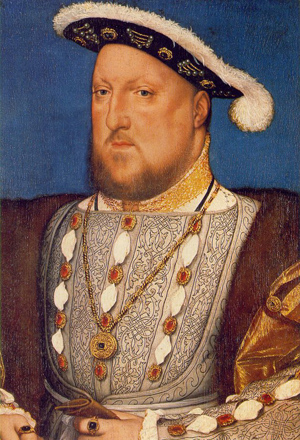
.jpeg) |
History 441/541
Sixteenth-Century European Reformations |
The Reformation of Henry VIII
The following chart gives an indication of the impact that secularization of the English monasteries had on royal finances. The first shows the impact that suppression of the monasteries had on the nominal incomes of the English crown. The Act of Supremacy, decreed in 1534, made Henry VIII the Protector and Only Supreme Head of the Church and Clergy in England. Suppression of the smaller monasteris in 1536, the larger ones in 1539. Incomes from these lands flowed into royal coffers; other revenues were generated by the sale of formerly monastic lands.
The second chart indicates the impact of Tudor policies on English royal incomes over the very long term. These trends present a rather more complex picture. On the one hand, there's no denying that nominal royal incomes increased massively under the Tudors. But the sixteenth-century inflation took a large bite out of those resources; on balance, the Henry VIII and his successors managed to hold royal incomes steady despite the deterioration of currency.
Image: Hans Holbein (1497-1543), Henry VIII (c. 1536). 27.5 x 17.5 cm. Thyssen-Bornemisza Collection, Madrid. Image source: The Artchive, http://www.artchive.com.

